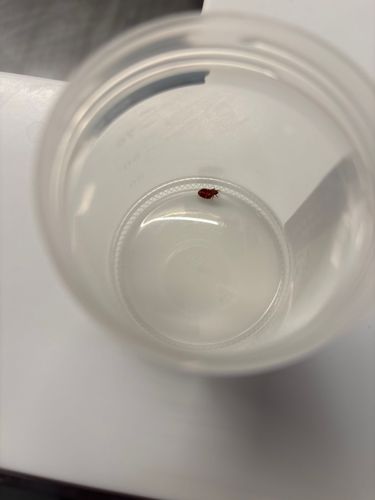Bed Bug
Scientific Name: Cimex lectularius
Order & Family: Hemiptera, Cimicidae
Size: Adult bed bugs are usually 4 to 5 mm (around 3/16 inch) long, and are flat, oval-shaped, and reddish-brown.

Natural Habitat
Bed bugs typically live in close proximity to humans, hiding in mattresses, box springs, bed frames, headboards, and other furniture. They can also be found in cracks and crevices in walls, behind wallpaper, and in electrical outlets.
Diet & Feeding
Bed bugs are nocturnal parasites that feed exclusively on the blood of warm-blooded animals, primarily humans. They pierce the skin with an elongated proboscis and feed for about 3 to 10 minutes.
Behavior Patterns
Bed bugs are nocturnal, emerging from their hiding places to feed on sleeping hosts. They are attracted to carbon dioxide and body heat. After feeding, they return to their harborage. Females lay 1 to 5 eggs per day, which hatch in about 6-17 days. Nymphs go through five instars, requiring a blood meal between each molt to reach maturity.
Risks & Benefits
Bed bugs are a significant pest. Their bites can cause itchy welts, skin irritation, and in some individuals, allergic reactions. While they are not known to transmit diseases, their presence can lead to anxiety, sleep deprivation, and psychological distress. They have no known benefits to humans or ecosystems in an urban setting.
Identified on: 9/15/2025